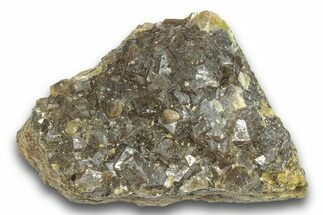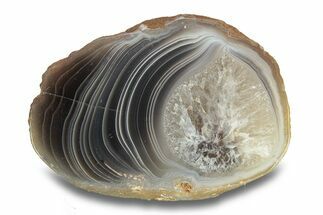This Specimen has been sold.
2.1" Lustrous Gilsonite Specimen - Uintah Basin, Utah
This is a 2.1" wide raw gilsonite specimen collected from the famous Uintah Basin deposit in Utah. It exhibits a wonderful luster and conchoidal fracturing.
About Gilsonite
Gilsonite, also known as Asphaltite, is a naturally occurring solid organic hydrocarbon that originates from the solidification of petroleum. It's used in many industries, including oil, gas, foundry, asphalt, ink, paint, and more. Gilsonite is mined in underground shafts, the largest deposit of which is the Uinta Basin of Utah. Other recently discovered gilsonite deposits that are being mined are in Colombia and Iran.
Composition: A major component of gilsonite is carbon; it also contains several other elements including nitrogen and sulfur and some volatile compounds.
Alternative names for gilsonite: asphaltite, uintahite, asphaltum, and oil sands.
Gilsonite, also known as Asphaltite, is a naturally occurring solid organic hydrocarbon that originates from the solidification of petroleum. It's used in many industries, including oil, gas, foundry, asphalt, ink, paint, and more. Gilsonite is mined in underground shafts, the largest deposit of which is the Uinta Basin of Utah. Other recently discovered gilsonite deposits that are being mined are in Colombia and Iran.
Composition: A major component of gilsonite is carbon; it also contains several other elements including nitrogen and sulfur and some volatile compounds.
Alternative names for gilsonite: asphaltite, uintahite, asphaltum, and oil sands.
 Reviews
Reviews












